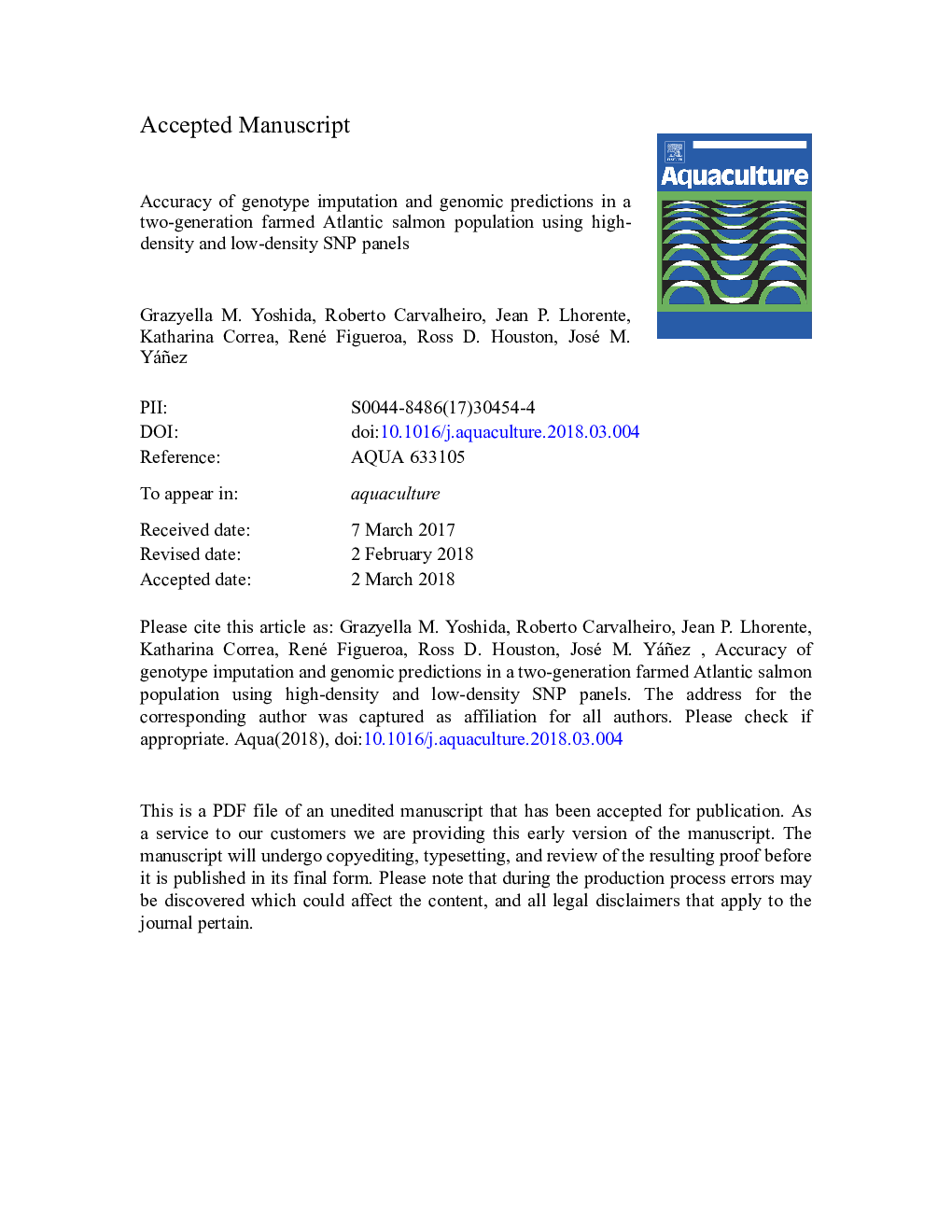| Article ID | Journal | Published Year | Pages | File Type |
|---|---|---|---|---|
| 8493229 | Aquaculture | 2018 | 30 Pages |
Abstract
The objectives of this study were: (i) to assess genotype imputation accuracy in different scenarios using genome-wide single nucleotide polymorphisms (SNP) data from a population comprising two generations of farmed Atlantic salmon and (ii) to assess the accuracy of genomic predictions for a quantitative trait (body weight) using the imputed genotypes. The pedigree consisted of 53 parents and 1069 offspring genotyped using a high-density SNP panel (50â¯K). Two groups were created: Group A: 90% of the offspring were included into training and 10% into validation sets; Group B: 10% of the offspring were included into training and 90% into validation sets. Different scenarios of available genotypic information from relatives were tested for the two groups previously described. Imputation was performed using three in silico low-density panels (0.5, 3 and 6â¯K) with all markers except the markers present on the low-density panel masked in the validation sets. The accuracy of genomic selection was tested using the scenarios that resulted in the best and the worst imputation accuracy for the three low density panels and were compared to accuracy obtained from pedigree-based best linear unbiased prediction (PBLUP) and genomic predictions using the 50â¯K SNP panel. In general, imputation accuracy ranged from 0.74 to 0.98 depending on scenario. For the best scenario with the highest number of animals in reference population (Group A), the accuracy of imputation ranged from 0.95 to 0.98 depending on the low-density panel used. For the best scenario with the lowest number of animals in reference population (Group B), the accuracy of imputation ranged from 0.94 to 0.98 depending on the low-density panel used. In general, the number of SNPs in the low-density panels had a greater influence on the accuracy of imputation than the size of the reference set. The accuracies of genomic predictions using imputed genotypes, ranging from 0.71 to 0.73, outperformed PBLUP (0.66) and were identical or very similar to the use of all true genotype data (0.73). The high imputation and genomic prediction accuracy suggest that the imputation of genotypes from low density (0.5 to 3â¯K) to high density (50â¯K) could be a cost-effective strategy for the feasibility of the practical implementation of genomic selection in Atlantic salmon.
Keywords
Related Topics
Life Sciences
Agricultural and Biological Sciences
Aquatic Science
Authors
Grazyella M. Yoshida, Roberto Carvalheiro, Jean P. Lhorente, Katharina Correa, René Figueroa, Ross D. Houston, José M. Yáñez,
